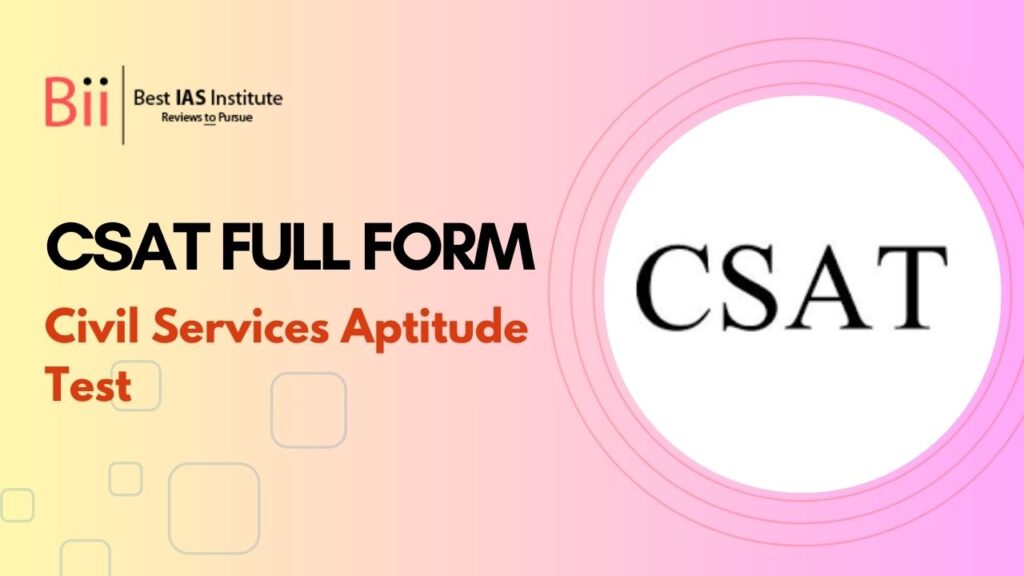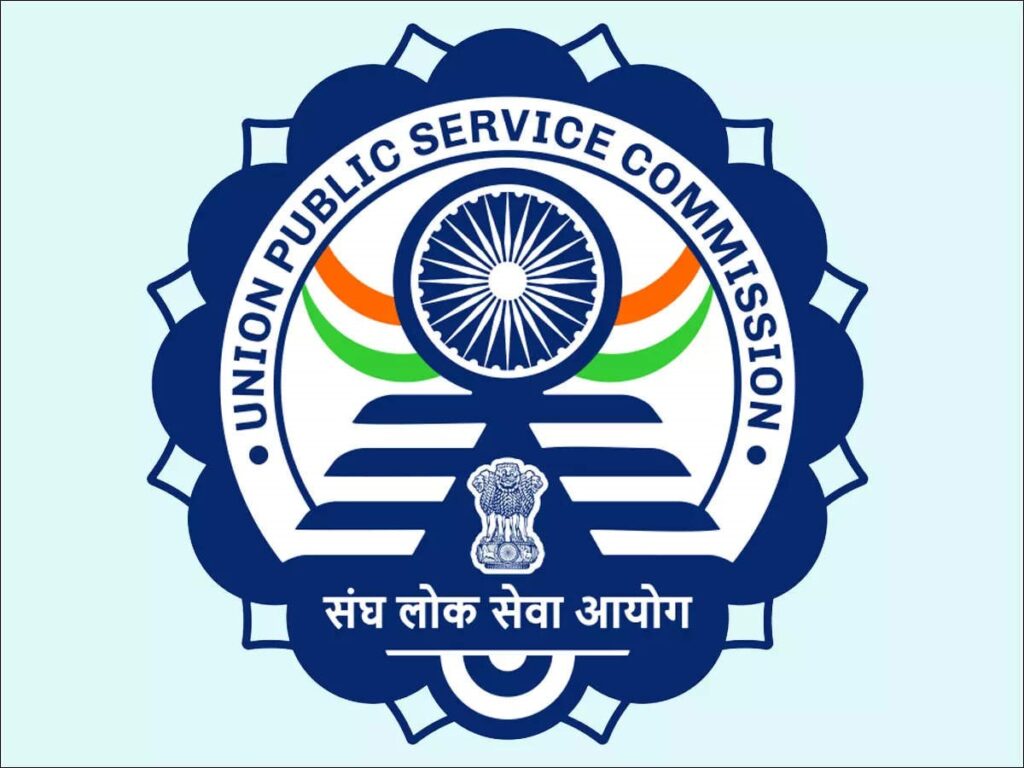
What is CSAT Full Form?
The CSAT full form is the Civil Services Aptitude Test, which is a crucial part of the Civil Services Examination (CSE) conducted under the Union Public Service Commission (UPSC). CSAT is Introduced in 2011, It serves as a means to evaluate the analytical skills, comprehension, decision-making , problem-solving abilities, aptitude, and reasoning ability of all UPSC aspirants and CSAT is a most important part of the UPSC Preliminary Examination.
In this article we will discuss CSAT conducted by UPSC Full Form, Exam Pattern , Syllabus etc.
What is the CSAT (Civil Service Aptitude Test) ?
The Civil Services Aptitude Test (CSAT) is an exam which conducted by UPSC in India for the selection of candidates for various civil services posts, such as the IAS ( Indian Administrative Service) , IPS (Indian Police Service), Indian Foreign Service (IFS) and many other civil services examination. CSAT is a part of the UPSC Civil Services Examination (CSE), which has a three-stage and in the examination the paper is only qualifying exam, and candidates have to score a minimum cutoff to be eligible for the next stage of the CSE on the basis of recent cut off.
CSAT Conducting Body
CSAT is conducted by the Union Public Service Commission which is also known as UPSC and UPSC is a central agency which is responsible for recruiting candidates for various civil services high level posts in India. The Union Public Service Commission (UPSC) was established in October 1926 and its headquarters is situated in New Delhi.
The Union Public Service Commission (UPSC) conducts various services exams, such as the Civil Services Examination (CSE), Engineering Services Examination (ESE), and Combined Defense Services Examination (CDSE),etc. The Union Public Service Commission (UPSC) is responsible for conducting the entire recruitment process, including the publication of notifications, application forms, conducting exams, and the final selection of candidates till they get recruited.
Exam Pattern for CSAT
Following details are mentioned the exam pattern of CSAT;
| Particular | Detail |
| Number of Questions Asked | 80 questions |
| Negative Marking | ⅓ marks / wrong answer |
| Duration of the paper | 2 hours (120 minutes) |
| Maximum marks | 200 marks |
| Minimum qualifying marks | Min. 33% |
| Exam type | Offline Mode |
Eligibility Criteria for CSAT
Candidates of CSAT must read the eligibility criteria established by the exam conducted by UPSC, which has following important points to keep in mind such as minimum or maximum age, educational qualifications required, nationality, etc.
- Nationality for CSAT: Candidates must be from India or citizens of Nepal, Bhutan, or Tibetan .
- Age Limit: The minimum age for the CSAT Exam is 21 years and maximum age limit varies based on the specific civil service positions but candidates from certain categories including SC/ST, OBC, and PWD, have age limit relaxations.
- Educational Qualification: Candidates must have a graduation degree from a recognized university and appearing students can also apply but must provide proof of passing the degree exam before the main examination.
- Number of Attempts: The number of attempts allowed for the CSAT Exam is 6 (max.) for general category candidates, 9 (max.) for OBC candidates, and unlimited attempts for SC/ST candidates.
CSAT UPSC Syllabus ( Paper – 2, Prelims)
Following are the syllabus for UPSC Prelims Paper 2- (CSAT) is given;
- Comprehension;
- Interpersonal skills including communication skills;
- Logical reasoning and analytical ability;
- Decision making and problem solving;
- General mental ability;
- Basic numeracy (numbers and their relations, orders of magnitude, etc.) (Class X level), Data interpretation (charts, graphs, tables, data sufficiency etc. — Class X level)
CSAT Marking Scheme
UPSC have mentioned the following marking system for CSAT examination;
- Paper-II of the Civil Services (Preliminary) Examination will be a qualifying paper with minimum qualifying marks fixed at 33%.
- The questions will be of multiple choice, objective type.
- It is mandatory for the candidate to appear in both the Papers of Civil Services (Prelim) Examination for the purpose of evaluation. Therefore a candidate will be disqualified in case he/she does not appear in both the papers of Civil Services (Prelim) Examination.
How to Prepare for CSAT ?
The Civil Services Aptitude Test (CSAT) Exam Strategy is crucial for the candidates who wish to crack the exam with a marks and you should start planning your strategy by keeping some key points in your mind given below;
- Understand the exam pattern and syllabus: Before starting your preparation, it is important to understand the exam pattern and syllabus thoroughly. This will help you to focus your preparation on the important topics and also prepare a study plan accordingly.
- Focus on time management: CSAT is a time-bound exam, and it is important to manage your time effectively during the exam and solving previous year question papers within the time limit to improve your time management for the exam.
- Practice mock tests for CSAT: Mock tests regularly to assess your preparation and identify your strengths and weaknesses in respective examinations or tests and this will also help you to get used to the exam pattern and build your confidence.
Conclusion
The full form of CSAT is the Civil Services Aptitude Test which is introduced in the year 2011 as a part of the UPSC Civil Services Exam (Preliminary) to test the analytical skills, reasoning ability and aptitude of IAS aspirants and CSAT Full Form stands for Civil Services Aptitude Test which is also known as General Studies-II in the UPSC Prelims examination. CSAT serves as the second paper in the UPSC Prelims. Being consistent and dedicated towards putting hard work & effort, along with effective planning and execution, is key to success in the CSAT Exam.
Click here to Download UPSC Previous Year Question Papers.



